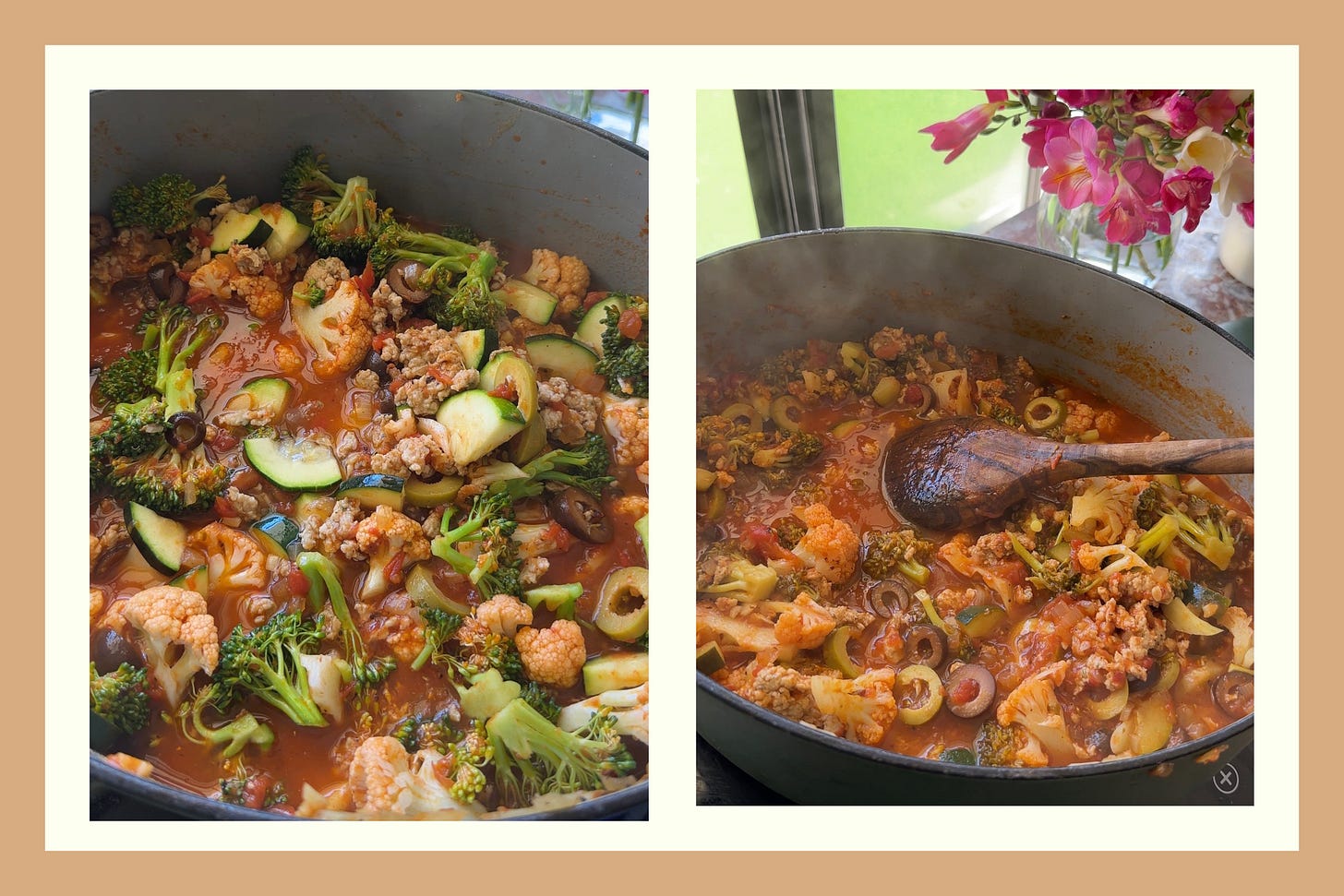Hi, friends. Happy Sunday. I love the vibrant, plentiful stalls of a farmer’s market and the neat, curated rows of a speciality store just as much as the next Substack food writer (see: last week’s newsletter for a love letter to that), but most days when I’m deciding what to cook for dinner, I find myself browsing something a bit closer to home: my fridge and pantry.
While I try to buy ingredients with recipes in mind or that I know I use frequently, I’m not immune to the pull of a perfect bunch of carrots, or the season’s first green beans, or even a sterile cellophane bag of baby spinach that I’m convinced will cure me if I sprinkle a bit into everything I cook (spoiler alert: I don’t and it doesn’t).
Oftentimes these ingredients get stowed away in the crisper and… promptly forgotten. This was especially true in my mid-twenties when I was living in New York City and learning how to cook for myself. Discovering what sounded good, what to mix and match, how much I could actually consume.
That’s when I first started making a version of today’s recipe. I’ll call it a stew, even though I think that’s one of the least appetizing titles to ever be bestowed upon food (right up there with sherbet.) To put it plainly though, it’s like a quick cheat’s bolognese sauce, minus the pasta and plus a whole lot of veggies.
Over the years as my cooking skills have improved, so has this dish (I definitely wasn’t deglazing the pan with my $5 bottle of Yellowtail when I was 25). But at its core, it remains a fridge clean out meal that I turn to again and again and, no matter how many times I’ve made it, I still get very excited to eat — even the leftovers.
Tell me more
It starts with ground meat — choose whatever you have in the back of the freezer. If you’re fresh out of reserves, I suggest Italian sausage, either the kind that comes without casing or a few links with the casing removed. This will let you build in more flavor without any extra ingredients.
Next we have our aromatics — onions of any size or color, garlic, scallions, shallots, etc. — and our veggies. One of the wonderful things about this recipe is that it’s designed to use up what you have on hand, even if it’s not the freshest. A quarter of a red onion that’s a little dry and sad, and a half a head of cabbage that’s been wilting away in the fridge are just perfect here. The measurements are suggestions, not rules.
We’re then going to turn to a kitchen shortcut I don’t use very often: jarred marinara sauce. Generally, I think homemade is best, but I’m not enough of a planner to make a big batch of red sauce and jar it myself. So, I crack open one of the jars of marinara or tomato basil (truly what is the difference between those two?) that I keep stowed away in the back of the pantry.
While I’m in there, I also pull out a can of black olives, then swing by the fridge again for my always ready and waiting to be made into a martini jar of stuffed green olives. They’re not for martinis tonight — though honestly, those would be a great pairing — but for the sauce. My mom used to add both black and green olives to her spaghetti sauce, and they taste so nostalgic to me here.
Then, we let it all stew. For as long as it needs to get the veggies to your desired consistency, and that’s it. All in all, it takes around 30 minutes. Is it revolutionary? No, not really, but it is a damn good way to make the most of what you have on hand. Hearty and comforting and honestly all the more delicious knowing that a little less food will be wasted.
TL;DR: How we’re elevating the everyday
Using the odds and ends from our fridge and pantry to create an elegant, 30-ish-minute, clean-out-the-fridge meal that doesn’t feel like an afterthought.
Before we start
This really is a use-what-you’ve-got meal. The recipe is meant to be taken with a grain of salt (and seasoned liberally with it, too). You can go up or down in the measurements for just about everything and it will still taste good.
That being said, we want to make sure we’re cooking all of our veggies optimally. If you have potatoes, use potatoes by all means, but I’d probably par-boil them first to make sure they’re able to soften up in the stew. Nothing worse than a crunchy potato.
Tougher veg like beets, turnips, and squash will benefit from a smaller chop so they can cook more quickly. If leafy greens are hanging around in your crisper, wilt those in during the last few minutes of cooking.
Most other veg I would just chop into bite-sized pieces and cook according to the directions in the recipe. If there is a certain veg you have on hand that you prefer softer or a bit less cooked, adjust! Increase the cooking time or wait a few minutes before adding that particular one in.
A good quality marinara sauce will truly make a big difference here. You can also use canned tomatoes (crushed, whole, whatever) instead, though you might want to go in with a few dried spices (garlic! fennel seeds! parsley! etc!) if you take that route.
I like using wine for deglazing — I seem to always have a little bit hanging around in the fridge — but broth will do, too. To mimic the acidity and sweetness of vino, make sure to add in a splash of vinegar and sprinkle of sugar, too. Better yet, balsamic vinegar will give you both of those things.
A can of beans will bulk this up quite a bit! You can also swap the meat for beans to veggie-fy it. Directions in the “Notes” section for how to do this.
Serve this with pasta, rice, bread, potatoes, a salad, or any combination of those things that sounds delicious to you and your taste buds. I like to top mine with some grated parm. It kind of feels like a chili in that you can really load it up with toppings (labneh or yogurt or sour cream; chopped fresh onions or herbs; crackers or chips for crunch; any kind of shredded or crumbled cheese).
The recipe
Serves: 4 generous servings
Cook time: 30-ish minutes
Keep reading with a 7-day free trial
Subscribe to Saturday Table to keep reading this post and get 7 days of free access to the full post archives.







